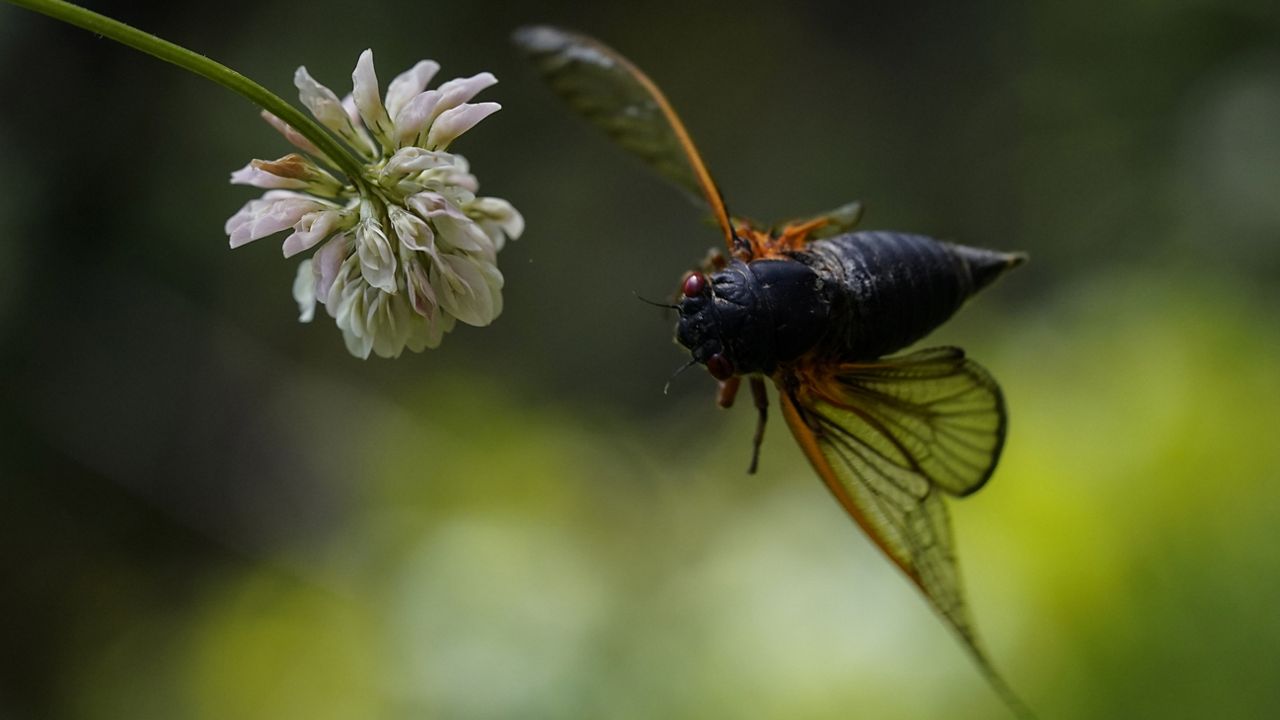As copious amounts of cacophonous cicadas emerge in states up and down the eastern United States after 17 years underground, one U.S. regulator is issuing a unique warning: Don’t eat them if you have a seafood allergy.
"We have to say it," the Food and Drug Administration (FDA) wrote on Twitter Wednesday. "Don't eat cicadas if you're allergic to seafood as these insects share a family relation to shrimp and lobsters."
This year’s batch of cicadas, known as Brood X, can be seen in 15 states from Georgia to New York, predominantly centered around Pennsylvania, northern Virginia, Indiana, and eastern Tennessee, according to the National Parks Service. The sound of their loud mating songs can even drown out passing jets.
When the soil warms up enough, cicadas emerge from the ground, where they’ve been sucking moisture from tree roots for the past 13 or 17 years, depending on species. They shed their exoskeletons, attach themselves to branches, mate and lay eggs before dying off in about six weeks.
But amid the rise of Brood X apparently comes the desire to eat them. There’s even an entire cookbook devoted to it: Cicada-licious: Cooking and Enjoying Periodical Cicadas.
Advocates for eating insects such as cicadas say that they are high in protein and are a very sustainable source of food.
David George Gordon, the author of “Eat-a-Bug Cookbook,” told The Associated Press that people need to “get over our dislike of insects,” noting the incredible versatility of eating bugs.
“You could make stir fry. You can mix them into dough to make bread — make banana bread, let’s say. You can batter them and deep fry them, which I think would be my favorite way,” he told The Associated Press.
In terms of adult cicadas, Gordon, colloquially known as the “Bug Chef,” recommends pulling the wings off of adult cicadas to reduce crunchiness, but advises gathering cicadas when they’re nymphs, or larvae.
Gordon puts them in the freezer, a humane way to kill them, and says that once defrosted, they can replace shrimp in any recipe, or could even be used as a pizza topping. He says they taste somewhat like asparagus.
“People can’t really deal with the idea of looking at a bug and eating it. So that’s why I like tempura batter or something that just conceals the features of the nymph,” Gordon said. “Plus, I’ll eat anything that’s deep fried. I have a recipe in my book for a deep-fried tarantula spider and they’re really good.”
University of Maryland entomologist Mike Raupp told the AP that “they have a buttery texture, a delicious, nutty flavor, probably from the tannins, from the roots of the trees on which they fed,” and recommends pairing them with a Merlot.
Andrew Zimmern, the host of Travel Channel’s Bizarre Foods, told USA Today they have “the taste of the forest floor” and can stand up to “the big flavors of garlic and ginger.” Zimmern even has a recipe for crispy wok-tossed cicadas.
Though those allergic to seafood should avoid eating them, the Environmental Protection Agency says that cicadas are by and large not harmful to humans or pets.
“Cicadas are not poisonous or venomous and are eaten by many organisms,” the EPA wrote. “Cicadas are not dangerous to pets. If dogs or cats eat many cicadas, this may temporarily cause an upset stomach or vomiting, but there is no need to worry if a pet eats a small number of cicadas.”
The FDA’s Center for Veterinary Medicine said that while cicadas are not toxic, they warned that their “crunchy/crispy exoskeleton can irritate the stomach lining if eaten in large volumes and can be a potential choking hazard, especially for small dogs.”
The Associated Press contributed to this report.



